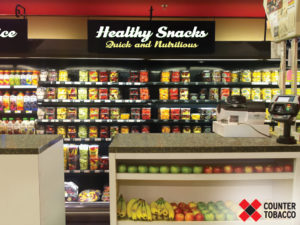Below are advances in point-of-sale tobacco control that we’ll be keeping an eye on in 2023. Click the links below or scroll to learn more:
- A Focus on Health Equity in POS Tobacco Control
- Comprehensive Bans on the Sale of Flavored Tobacco Products
- Tobacco Retailer Licensing
- Point-of-Sale Pricing Policies
- A Changing Tobacco Product Landscape
- Endgame Strategies
- Battles over Preemption
- Partnerships to Create Healthier Places: Tobacco, Food, Alcohol, Cannabis, and Physical Activity
1. A Focus on Health Equity in POS Tobacco Control
The United States has steadily expanded tobacco protections since 1964, resulting in less smoke in the air and fewer advertisements of tobacco products. However, these protections, which most Americans now take for granted, are not evenly distributed across the country or even across neighborhoods.
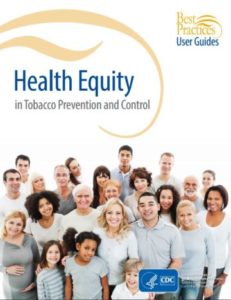
There are also disparities in the availability and marketing of commercial tobacco products on a neighborhood level. Data from the 500 largest cities in the United States shows that census tracts with the highest smoking rates are also the ones with a greater density of tobacco retailers. These census tracts, which generally face multiple disadvantages, are also the ones with lower median household incomes and a greater proportion of people of color. [1]
The tobacco industry also targets specific demographic groups through tailored marketing tactics; bright candy-like packaging and an array of flavors appeal to youth while ads depicting rugged cowboys and hunters appeal to rural populations. As well, the industry, on countless occasions, has exploited Native American images on commercial tobacco products, a tactic used to encourage Native American use while also portraying tobacco products as more ‘natural’ to other communities.
A critical assessment of these manipulative tactics helps explain why, despite the overall US smoking rate decreasing to 12.5%, rates are much higher among people with lower levels of income and education, people who identify as American Indian/Alaska Native, men, people who identify as LGBTQ, people facing mental illness and disabilities, people who are uninsured or on Medicaid, and people living in the South and Midwest.
Fortunately, there are evidence-based and promising pro-equity solutions at the point of sale. This past year, the Centers for Disease Control and Prevention’s (CDC’s) Office on Smoking and Health published a new supplement to the Best Practices User Guides, Tobacco Where You Live: Retail Strategies to Promote Health Equity. The document was written in partnership with the Center for Public Health Systems Science at Washington University in St. Louis. Tobacco retailers are concentrated in low-income neighborhoods and communities of color. Retail strategies can advance health equity by limiting access to and availability of commercial tobacco products, reducing exposure to tobacco marketing, and promoting cessation. The Tobacco Where You Live: Retail Strategies to Promote Health Equity supplement can help you:
-
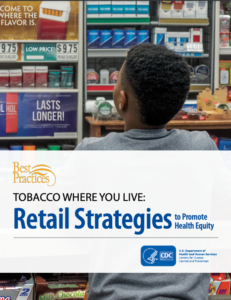
Learn more in “Tobacco Where You Live: Retail Strategies to Promote Health Equity” Understand the local retail environment
- Implement commercial tobacco retail strategies equitably
- Learn how communities have used retail strategies to advance health equity
- Identify the best resources and tools to get started.
Read on below to learn how strategies like raising tobacco prices (trend #4), banning the sale of menthol cigarettes and all other flavored tobacco products (trend #2), and reducing tobacco retailer density (trend #3) can work to reduce disparities and improve health equity.
Health equity can and should be considered as part of any tobacco control policy, including equitable enforcement, and we expect this to get more attention in 2023 as well. Localities can consider conducting a health equity impact assessment to determine what the results of any given policy may be on the ground. An approach considering social determinants of health can help practitioners ensure that a policy’s benefits reach all populations and that resources and services are distributed consistently and equitably across these populations so as not to exacerbate existing disparities.[9]
2. Comprehensive Bans on the Sale of Flavored Tobacco Products
We know that youth are more likely to initiate tobacco use with a flavored or menthol tobacco product. We also know that menthol products are easier to start and harder to quit. Scientific reviews and publications have time and again concluded that their removal from the market would benefit public health. Banning the sale of menthol cigarettes and all other flavored tobacco products also has significant potential to improve health equity.
Recent research found that between 1980 and 2018, menthol cigarettes slowed the decline of smoking prevalence by 2.6%. Researchers estimate menthol cigarettes were responsible for 10.1 million extra smokers, 3 million life years lost, and 378,000 premature deaths.[34] With the tobacco industry’s relentless targeted marketing of menthol cigarettes to the African American community, a disproportionate amount of the harm from menthol has also fallen on African Americans. While 12% of the US population is African American, African Americans account for 41% of the premature deaths and 50% of the life-years lost during this same time period.[38] A report from the Tobacco Products Scientific Advisory Committee showed that if menthol cigarettes were banned nationally, 39% of all people who smoke menthol cigarettes and 47% of African Americans who smoke menthol cigarettes would quit.[4] A menthol ban could also curb both initiation and progression to regular smoking among youth, as 80% of youth who have ever tried tobacco started with a flavored product,[5] and youth who initiate smoking with menthol cigarettes are 80% more likely to later smoke every day.[6] .
We have seen significant progress towards removing these deadly products from the market in the past year. On April 28, 2022, the FDA announced a proposed rule to prohibit menthol as a characterizing flavor in cigarettes, as well as prohibit menthol and all other characterizing flavors in cigars. The docket for public comment on these two rules received nearly 250,000 comments altogether. You can search and view all submitted comments here for rule on menthol cigarettes and here for the flavored cigars rule.
- Read the FDA’s full press release here.
- Read the proposed tobacco product standard for menthol in cigarettes and submit comments here.
- Read the proposed tobacco product standard for characterizing flavors in cigars and submit comments here.
- FDA Fact Sheet: Proposed product standards to prohibit menthol as a characterizing flavor in cigarettes and all characterizing flavors (other than tobacco) in cigars
While this is a major step forward for public health, health equity, and the commercial tobacco endgame, the processes for finalizing and implementing these rules could still take years. We hope to see the FDA issue a final rule in 2023, but that means it would likely not be implemented until 2024, and that’s without delays from likely tobacco industry litigation. State and local action to prohibit the sale of menthol cigarettes and all other tobacco products remains critical and can save lives and prevent addiction now. In the meantime, keep an eye out for more comprehensive policies prohibiting the sale of all flavored tobacco products, including menthol cigarettes, at the local and state level.
Flavored e-cigarettes also remain a concern as a key driver of youth e-cigarette use. While the FDA prohibited flavors other than menthol or tobacco in cartridge-based “pod mod” e-cigarettes like Juul in January 2020, flavored disposable e-cigarettes like Puff Bar and flavored e-liquids used in tank and mod style e-cigarettes remain on the market (most illegally given their lack of authorization under the FDA’s premarket review process). Data has shown that youth use of types of e-cigarettes not covered by the sales ban have skyrocketed, and use of flavors in products for which the restrictions apply have just shifted to menthol, underscoring that youth will use whatever flavors are available.
In 2022, we saw continued progress, including the implementation of a ban on most flavored tobacco producs (including menthol cigarettes and flavored e-cigarettes) in California following a referendum forced by the tobacco industry in which the policy passed by the legislature in 2020 was upheld with over 63% of the vote. In 2022, the movement to ban the sale of flavored tobacco products had its first success in Ohio, with Columbus passing a ban on the sale of most flavored tobacco products. In addition, the movement expanded in Oregon, with Multnomah County joining Washington County with a comprehensive policy. Additional localities in Maine, California, New York, and Massachusetts also passed their own policies. They join at least 360 localities across 13 states now restricting the sale of flavored tobacco products, with an increasing number that include all retailers and all flavors. As of December 2022, at least including 170 localities and 2 states restricted the sale of menthol cigarettes. There are already proposals to ban the sale of all flavored tobacco products in the states of Oregon and New York in 2023. Look for more to come as the year goes on!
Learn more about flavored tobacco products and menthol tobacco products in our evidence summaries.
3. Tobacco Retailer Licensing
Tobacco retailer licensing (TRL) is a versatile regulatory tool that can be used to implement a range of policies. In its simplest form, a TRL policy requires stores that want to sell tobacco products like cigarettes, cigars, smokeless tobacco, and e-cigarettes to obtain a license from the city, county, and/or state. Strong TRL ordinances require retailers to pay an annual fee to obtain or renew their license that covers the cost of administration and enforcement of the license, including regular inspections. A study published in the journal Pediatrics showed that strong TRL policies may lower youth initiation and use of both cigarettes and e-cigarettes.[10] In California localities that had a strong TRL, youth were 33% less likely to initiate cigarette use and 26% less likely to initiate e-cigarette use over the course of 1.5 years compared to localities that had no licensing or did not have a licensing fee high enough to cover the costs of enforcement.[11]
Licensing allows for more accurate tracking of all tobacco retailers in a given geography, including e-cigarette retailers and vape shops, and can serve as a platform on which to build other regulations that can have a large impact on the community environment, such as restricting the density, type, and location of tobacco retail outlets (e.g. no licenses can be issued to retailers at stores near schools). The potential for license suspension or revocation as a consequence for violations encourages retailers to comply with tobacco control law more than fines, which some may see as the cost of doing business. Despite the major benefits of licensing for tracking retailers, ten states still lack any licensing requirement for tobacco retailers at the state level.
There’s plenty of work to do in 2023, both for the remaining states without licensing and for strengthening some existing licensing laws that lack adequate funding to be effective. See the American Heart Association’s Tobacco Retail Licensure interactive map for more on each state’s licensing provisions. In addition, with 10 states that have yet to update their laws to match the federal minimum legal sales age of 21, there are opportunities for states to update their laws to include licensing and/or strengthen their current licensing laws at the same time. Licensing is also a key mechanism for ensuring that enforcement for tobacco control policies is focused on retail sales rather than on underage youth purchases. Learn more about Tobacco 21 best practices here and see state Tobacco 21 grades here to see how they align with best practices, including enforcement through licensing. Learn more about equitable enforcement of tobacco control policies here.
Mapping can help communities determine the impact of any given TRL policy on the ground, for example, by helping to provide visual evidence displaying the number of tobacco retailers currently located near schools in their town or disparities in tobacco retailer density rates in their community. Mapping can also help determine what TRL “plug-ins” might have the most impact on the tobacco retail environment in their community.
4. Point-of-Sale Pricing Policies
Raising tobacco prices is one of the most effective strategies for reducing initiation, decreasing consumption, and increasing cessation of tobacco products.[2] Additionally, this strategy can help reduce tobacco use among low-income groups and reduce socioeconomic disparities in smoking; in fact, one study found that increasing tobacco prices was the only policy option of those assessed to show a significant pro-equity effect.[3] Point-of-sale pricing policies are innovative tobacco control solutions that can reduce health disparities, counteract industry targeting, and encourage people who smoke to quit. Prices can be increased through excise taxes and through other policies such as establishing minimum “floor” prices and prohibiting coupon redemption and discounts on tobacco, which can help prevent the tobacco industry from circumventing the effects of tax increases.[12]
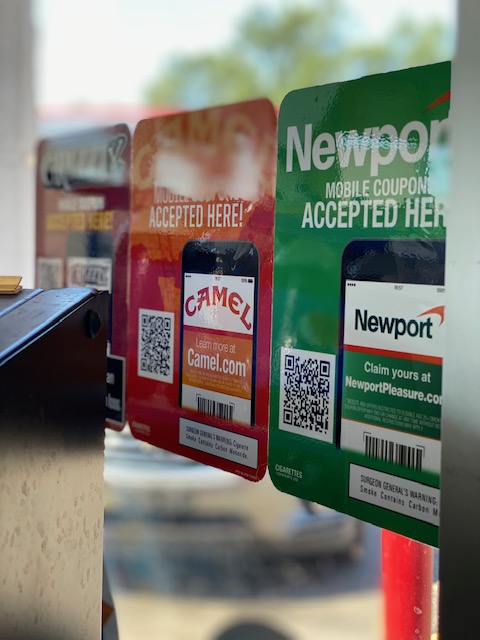 Three states (Rhode Island, New York, and New Jersey) prohibit discounts on tobacco and the redemption of coupons. As states look to raise excise taxes on tobacco, they can also consider minimum floor prices and prohibiting discounts at the same time in order to keep prices high, as recent research suggests is needed.[13] For example, Colorado’s tax increase that voters approved in 2020 also set a minimum floor price of $7/pack of cigarettes, which will rise to $7.50 in 2024.
Three states (Rhode Island, New York, and New Jersey) prohibit discounts on tobacco and the redemption of coupons. As states look to raise excise taxes on tobacco, they can also consider minimum floor prices and prohibiting discounts at the same time in order to keep prices high, as recent research suggests is needed.[13] For example, Colorado’s tax increase that voters approved in 2020 also set a minimum floor price of $7/pack of cigarettes, which will rise to $7.50 in 2024.
On a local level, more places are also considering minimum floor prices and price discounting bans, such as St, Paul, MN, New York City, as well as several other localities in California, Minnesota, and Massachusetts.
Minimum price policies that also prohibit the use of price promotions (e.g. coupons, multi-pack discounts) could help reduce socioeconomic disparities in smoking by raising the price of discount brands, which may encourage more people who are lower-income and smoke to quit. [14] However, these policies should also be paired with increases in the availability of cessation resources and targeted outreach to low-income communities. Strong minimum price laws can also prevent price manipulation by geographic area or by brand, thereby reducing targeting of products to certain populations. Models estimate that prohibiting price promotions across the US could reduce smoking rates by 13%, [15] and establishing a national minimum price of $10 per pack of cigarettes could reduce cigarette sales by 5.7 billion packs per year and result in 10 million people quitting.[16] Learn more about raising the price of tobacco through non-tax approaches.
5. A Changing Tobacco Product Landscape
In 2023, we will continue to see changes, both large and small, to the tobacco product landscape. The FDA Center for Tobacco Products is now under the leadership of Brian King, formerly of the CDC Office on Smoking at Health. Here are the changes we’ll be watching this year:
Premarket Review: One major factor in how the product landscape changes is what happens with ongoing FDA premarket review and related FDA enforcement. At this point, all products that were not on the market prior to the 2016 “deeming rule” and which have not received marketing authorization from the FDA should no longer be on the market. While the FDA has issued marketing denial orders to over 1 million products, as of January 2023, the agency has only authorized the marketing of a couple dozen e-cigarette products and even fewer other tobacco products. They report having ruled on more than 99% of the nearly 6.7 million deemed products that submitted premarket applications by the deadline.
Also in 2022, the FDA:
- Denied marketing authorization for all Juul products. While the FDA’s stated reasons for the denial order are that “the applications lacked sufficient evidence regarding the toxicological profile of the products to demonstrate that marketing of the products would be appropriate for the protection of the public health,” and “concerns due to insufficient and conflicting data – including regarding genotoxicity and potentially harmful chemicals leaching from the company’s proprietary e-liquid pods,” many public health organizations hailed the decision due to the outsize role that Juul played in creating the youth e-cigarette use epidemic. Juul has been able to keep their products on the market following their lawsuit and a court-ordered stay while their appeal is ongoing, but the company has also faced financial trouble, entering a $440 million settlement with 33 states this past year, amongst other past settlements and ongoing lawsuits.
- Made its first decision based on full scientific review for a menthol flavored e-cigarette, denying marketing authorization to Logic Pro Menthol e-Liquid Package and Logic Power Menthol e-Liquid Package. In January 2023, two more menthol e-cigarettes were issued marketing denial orders. Given the evidence of menthol’s appeal to youth and that it interacts uniquely with nicotine to enhance addictiveness, it seems unlikely that any menthol e-cigarettes will be authorized.
- Gained the authority to regulate synthetic or “non tobacco” nicotine products, closing a previous loophole; pre-market review is ongoing for those products.
- Along with the US Department of Justice, issued permanent injunctions to 6 e-cigarette companies that continued to market their products without authorization. This was the first action of this kind the FDA has taken to enforce the premarket review requirements.
- Issued a warning letter to Puff Bar, the brand currently most popular among youth, and a marketing denial order to Hyde e-cigarettes, another product currently popular among youth. This was welcome and overdue action, given new research from the Truth Initiative, which revealed that none of the warning letters the FDA sent between 2020 and 2021 regarding violation of the premarket review requirements were to e-cigarette brands with a large market share or those that were popular with youth. Instead, most were issued to small, online retailers.
It is up to the FDA to remove products that remain on the market without authorization – we hope to see more progress on this as well as additional premarket review decisions in 2023.
Very Low Nicotine Cigarettes: While 22nd Century’s very low nicotine (VLN) cigarettes were granted marketing authorization by the FDA in December 2019 (including a menthol flavor), in December 2021 they were granted authorization to market the products as “modified risk tobacco products,” though specifically only with reduced exposure claims, including “95% less nicotine,” “Helps reduce your nicotine consumption,” and “greatly reduces your nicotine consumption.” They will also be required to also include the statement “Helps you smoke less” alongside the other claims on the cigarette packaging and advertisements. While the cigarettes have now entered the market in Colorado this past year, it’s unclear how popular these VLN cigarettes may be with current smokers. However, in June 2022, the FDA announced plans for a proposed rule that would set a maximum amount of nicotine in cigarettes, reducing it to a minimally or non-addictive level. The proposed rule will be issued by May 2023, after which there will be an open comment period. Public health organizations like the Campaign for Tobacco Free Kids are encouraging the FDA to act swiftly and to extend the rule to cover all combustible products. While the timeline to see this rule come to fruition will likely be long, it would be an enormous step in the commercial tobacco control “endgame” and would mean huge gains in public health. As cited in the FDA press release, “a potential nicotine product standard could result in more than 33 million people not becoming regular smokers, a smoking rate of only 1.4%, and more than 8 million fewer people dying from tobacco-related illnesses.” This action follows the FDA’s initial plan to reduce nicotine in cigarettes announced in 2017.
“Modern” Oral Nicotine Products: Products like nicotine pouches (e.g. Zyn, Velo, On) as well as nicotine lozenges continue to expand on the market as a fast-growing category. They come in a range of flavors and nicotine strengths (including some very high nicotine concentrations) and some are advertised as containing “tobacco-free nicotine.” They’re also often (illegally) marketed as cessation products. The flavors and possibility for discreet use of the smokeless, spitless products is concerning. Data collected by the Truth Initiative in 2020 showed a concerning level of youth use, with 13% of 15-24 year olds reporting using oral nicotine pouches within the past 30 days. While the 2022 National Youth Tobacco Survey showed that a little over 1% of middle and high school students are using these products, e-cigarettes have shown us that product use can change rapidly. Learn more about this products in our podcast episode on nicotine pouches and other “modern” oral nicotine products.
6. Endgame Strategies
The ‘Tobacco Endgame’ is a set of initiatives that seeks to eradicate tobacco use by establishing strategies that “eliminate the social, political, and structural constructs that allow the tobacco epidemic to continue.” [18] In 2022, we saw some key endgame policies implemented, including:
- In May 2022, the city of Little Canada, MN began sunsetting all tobacco licenses. Similarly, in June 2022, the city of Bloomington, MN began phasing out all tobacco licenses, meaning that when a store with an existing license to sell tobacco products closes, its license will not be replaced and no new tobacco licenses will be issued.
- In October 2022, a judge dismissed a case against Brookline, MA’s “tobacco-free generation” policy that prohibits tobacco sales to anyone born after January 1, 2000, allowing it to remain in effect.
There are a variety of endgame policy options, including ending all tobacco sales without a phase-out period, as two localities in California have done: Beverly Hills, CA now prohibits all tobacco sales except in cigar lounges & hotel concierge to hotel guests and Manhattan Beach, CA prohibits the sale of all tobacco products everywhere in the city.
Internationally, other countries are leading the way. New Zealand is working towards an “endgame” for commercial tobacco control with a series of new tobacco regulations that will be phased in starting in 2023, including:
- a “smoke free generation” policy that prohibits anyone born after 2008 from ever purchasing combustible tobacco products
- reducing the amount of nicotine in cigarettes to below-addictive levels
- reducing the number of tobacco retailers in the country from over 6,000 to just 600.
On a state-wide level, at the beginning of 2020, the American Heart Association was awarded a $5.6 million grant by the California Department of Public Health, California Tobacco Control Program to establish the California Tobacco Endgame Center for Organizing and Engagement. With a goal of totally eliminating tobacco use in California by 2035, the Center provides training and technical assistance to support and grow the capacity of state and local organizations and agencies to pass comprehensive policies focused on heavily restricting tobacco products, which, in turn, would lead to a phasing out of public use of tobacco products. While movement from tobacco control to commercial tobacco product elimination is an ambitious goal, we expect to see great progress and hope to see other state and local-level initiatives testing out innovative endgame strategies in 2023.
Along the way, many communities are taking incremental steps to reduce tobacco product availability and exposure to tobacco marketing in the retail environment through retailer density reduction strategies that reduce the number, type, or location of retailers. Many of these policies can be structured to also reduce disparities on the road to the endgame for all. For example, research conducted in New York and Missouri has shown that restricting tobacco retailers from locating near schools could nearly eliminate disparities in tobacco retailer density between neighborhoods.[7] This restriction can be accomplished through licensing. Licensing strategies in San Francisco and Philadelphia that have also capped the number of retailers within each city district are also working to reduce disparities in density between neighborhoods, and in rural areas, setting an overall cap on the number of retailers may help reduce disparities in density. This matters because when there is a higher concentration of tobacco retailers in a given neighborhood, smoking rates are also higher.[8]
Reminder: While Big Tobacco talks about a “smoke-free world,” they continue to market the most deadly of their products aggressively both in the U.S. and in low- and middle-income countries, where they see untapped markets. Learn more about Big Tobacco’s attempts to appear like they are in favor of harm reduction in Truth Initiative’s report, “Spinning a New Tobacco Industry.” Their game is not the endgame.
Learn more about endgame approaches to commercial tobacco in our endgame podcast episode.
7. Battles over Preemption
Preemption of local level tobacco prevention and control policies is always something to be watching for. Unfortunately, preemption is one of the tobacco industry’s favorite tools to limit local innovation and prevent the implementation of life-saving policies. We know that local-level policy work often precedes state-level adoption of a policy, so tobacco companies have a vested interest to keep local power limited; the industry also often has more influence at the state level.
In recent years, we have seen wide ranging preemption on local laws governing the sale of tobacco products that were enacted as part of statewide “Tobacco 21” bills, and preemptive provisions are often added in at the behest of the tobacco industry at the last minute and/or in seemingly unrelated bills. Unfortunately, we’re likely to see more attempts to add in preemption in 2023.
This mirrors a trend in pushes for preemption happening on many public health fronts (in many cases pushed by the American Legislative Exchange Council) including higher minimum wages, paid sick leave, anti-discrimination laws, gun control laws, sugar-sweetened beverage taxes, and plastic bag or straw bans.
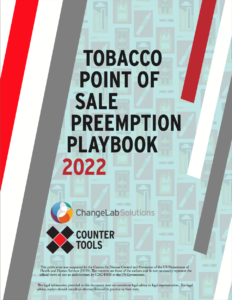
Despite this, some states with preemption currently in place are beginning to push back on those limits to local authority. For example, in early 2019, advocates in Colorado successfully passed a law that reversed a previously existing de-facto preemption on local cigarette regulation. Previously, if a Colorado jurisdiction passed a retail licensing law for cigarettes or a cigarette tax law, that jurisdiction would forfeit eligibility to receive their portion of cigarette sales tax money from the state. The new law removed that restriction and gave counties the express authority to regulate the sale of cigarettes and other tobacco or nicotine products, as is further discussed in our case study. Since then, Colorado localities have been on the move, passing policies restricting the sale of flavored tobacco products, raising the minimum legal sales age to 21, tobacco retailer licensing, and local tobacco taxes.
For more information on the different forms preemption can take, key steps and legal considerations for determining local authority, and strategies communities across the country are using to make progress despite preemption of local point-of-sale tobacco policies, check out the Tobacco Point of Sale Preemption Playbook we developed with ChangeLab Solutions and find lots of other resources on our page on tobacco point of sale preemption.
8. Partnerships to Create Healthier Places: Tobacco, Food, Alcohol, Cannabis, and Physical Activity
This trend is perhaps a hopeful one. Interventions in the retail setting present the opportunity to address multiple factors that influence health. The evidence behind how exposure to tobacco advertising and promotions at the point of sale contributes to tobacco use behaviors continues to grow. Across multiple studies, research has shown that youth more frequently exposed to tobacco promotion are 60% more likely to have tried smoking and 30% more likely to be susceptible to future smoking.[21] As such, community interest in creating healthy retail environments has heightened, not only around tobacco but also around alcohol, food, cannabis, and the ways in which the community retail environment can support physical activity. The retail environment includes both the community environment (e.g. number, type, and location of stores) and the consumer environment (e.g. what products are sold, how they are advertised, prices, etc.). A study of food retailers that also sold tobacco in three North Carolina counties found that the community and consumer environments for nutrition, physical activity, and tobacco were interrelated, indicating that measures solely assessing the community environment can miss characteristics of the consumer environment.[22]
Policies can address the retail environment holistically by tackling multiple issues at the point of sale in coordination instead of addressing each in isolation. The authors of the study in North Carolina suggested that food ordinances requiring licensed grocery stores to sell a minimum standard of healthy food, like Minneapolis’s staple food ordinance, can be expanded to place a cap on the amount of tobacco marketing allowed outside the store to reduce youth exposure.[23] Given that areas with a higher number of tobacco retail outlets are often more urban and more walkable, restricting exterior advertisements to reduce youth exposure may be of heightened importance. [23] Further improvements to the aesthetics of the store exterior, such as better lighting, removing graffiti, providing adequate trash receptacles, and preventing loitering could also be incorporated as requirements for participation in healthy store programs in order to encourage walkability and active transport around the store. [23]
With a growing number of states legalizing cannabis for adult use, it is a critical time for states and localities to think about the intersections of how the products should be regulated, considering dual use, lessons learned from tobacco control, and consistency in how marketing and sales are regulated in the retail environment.
As interest in an endgame for commercial tobacco sales grow, healthy retail initiatives may be part of the solution for helping convenience stores to adjust their business models and make the transition away from tobacco. Some larger chains are beginning to shift their models already, as evidenced by Walmart’s announcement last year that it is ending tobacco sales in some stores.
Counter Tools can help with monitoring and tracking of the sale of tobacco, e-cigarettes, alcohol, cannabis, food, and beverages, as well as with planning healthy retail initiatives. Contact us at hello@countertools.org.
For more strategies on interdisciplinary collaboration to create healthy retail environments, review:
- ChangeLab Solution’s Healthy Retail: A Set of Tools for Policy and Partnership, which includes a healthy retail Playbook, Conversation Starters, and a Collaboration Workbook.
- Healthy Retail San Francisco
- Our evidence summary on Healthy Retail
- Integrating Tobacco Control and Obesity Prevention Initiatives at Retail Outlets, published in the journal Preventing Chronic Disease.
- California Department of Public Health’s Healthy Stores for a Healthy Community
- National Collaborative on Childhood Obesity Research’s Measures Registry.



